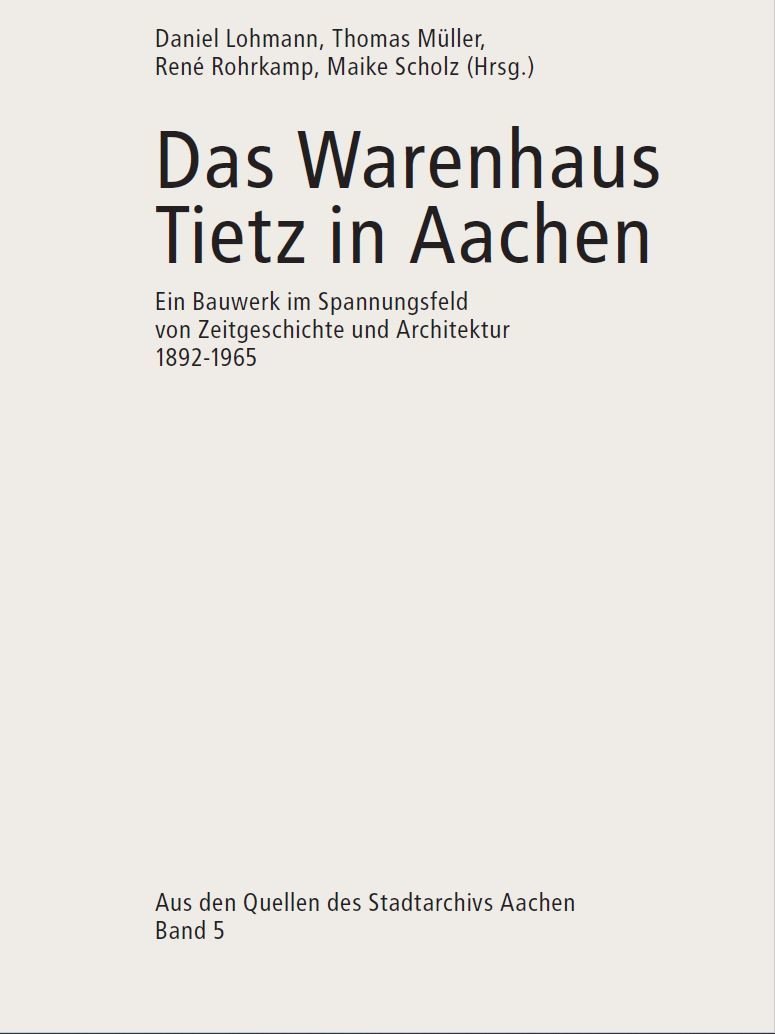Von 1906 bis 1965 stand am Aachener Markt ein von Anfang an bewunderter wie auch umstrittener Bau, der mit markanter Architektur schnell einen wichtigen Stellenwert im öffentlichen Leben der Stadt Aachen einnahm: das Warenhaus Tietz. Unmittelbar nach der sog. Machtergreifung der Nationalsozialisten im Jahr 1933 wurde der sich im Besitz der jüdischen Familie Tietz befindende Konzern arisiert und in die Westdeutsche Kaufhof AG umgewandelt. Die Kaufhof AG nutzte den Warenhausbau bis in die 1950er-Jahre hinein - bis zum Umzug in einen Neubau an anderer Stelle in der Stadt.Der Abbruch dieses Warenhauses am Markt wird von Teilen der Aachener Bürgerschaft bis heute bedauert. Diese emotionale Verbundenheit mit diesem besonderen Gebäude war der Anlass, seine wirtschaftliche, soziale und architektonische Geschichte anhand von zahlreichen Archivalien aus dem Stadtarchiv Aachen und anderen Überlieferungen nachzuzeichnen. Das Buch stellt die erste umfassende wissenschaftliche Untersuchung des Bauwerks, aber letztlich auch der Geschichte des Warenhauses Tietz bzw. des Kaufhof Aachen dar.



